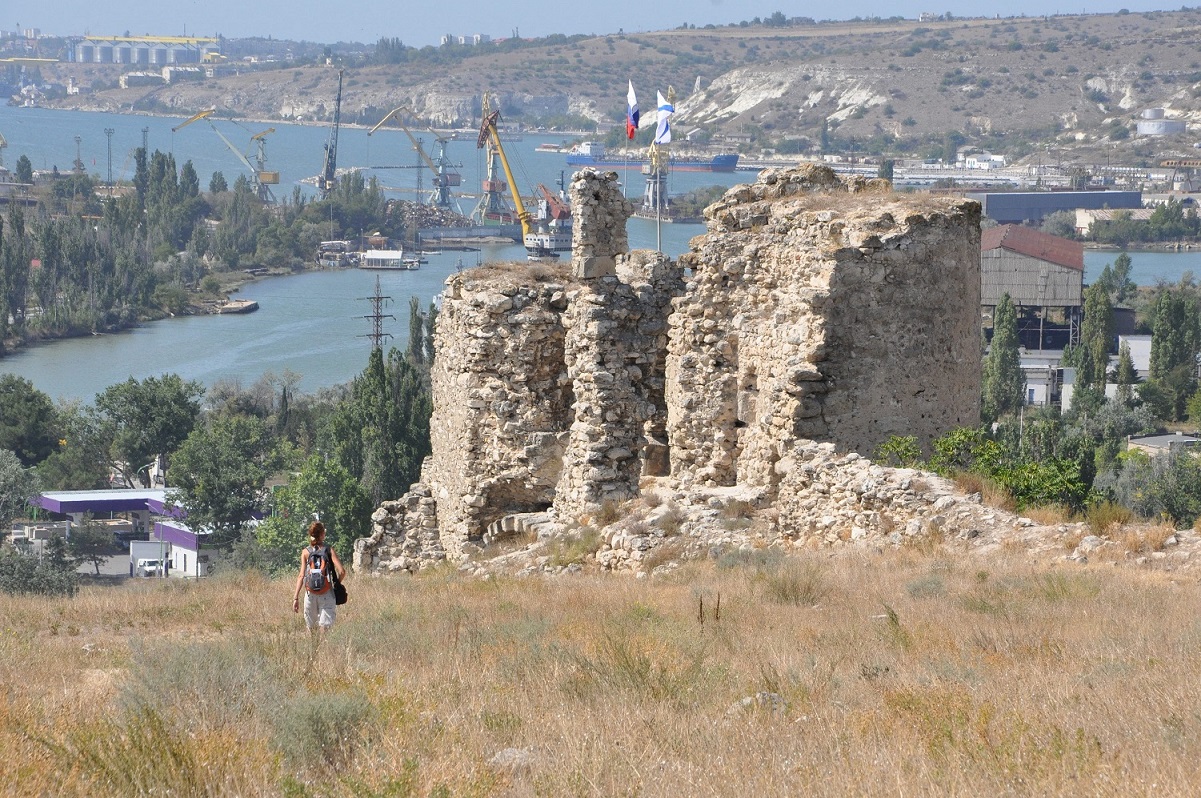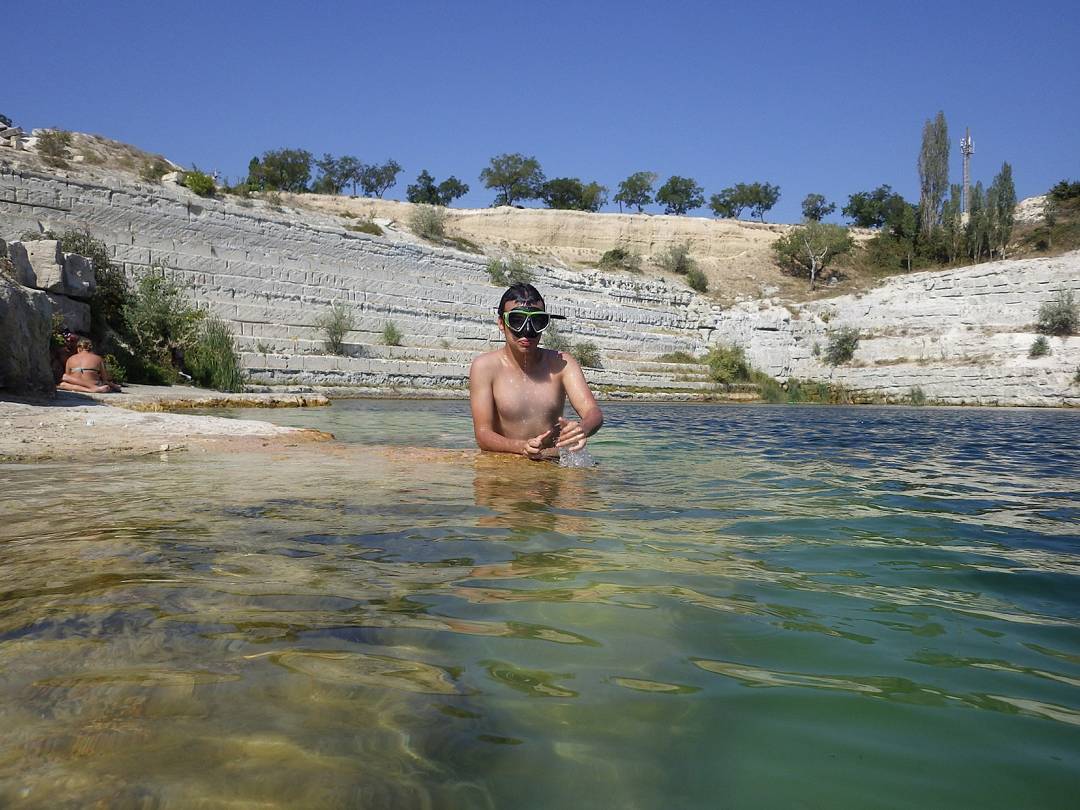- Published on
Kalamita Fortress with an underlying cave monastery is a unique example of sacral architecture and defense of the Crimea. The first fortification on this site Byzantines founded in VI century, at the turn of XIV-XV centuries the Principality of Theodoro cramped here fortress, and later it was captured by the Turks and rebuilt. The ruins of the fortress on the plateau Monastic rock near the present city of Inkerman and surrounding areas in 1500 square meters.

The fortress consisted of six towers up to 12 meters connected kurtsіnnaga up to 5-10 meters. Excellent protection of the fortress was also due to natural formations: the south and west defended it open to the north and east - the cut in the rock moat. At the moment, there remain only fragments of walls and towers and a large cross of the former church, but the kind that opens from the rock, able to charm anyone.
Special attention should be connected with the location of the fortress stairs cave monastery. Rock riddled with numerous caves that are kellyamі and temple premises. It is noteworthy that here was one of the first popes - Klіmentsіy.
Going back a little further in history, The Battle of Inkerman was fought during the Crimean War on 5 November 1854 between the allied armies of Britain, France and Ottoman Empire against the Imperial Russian Army. The battle broke the will of the Russian Army to defeat the allies in the field, and was followed by the Siege of Sevastopol. The role of troops fighting mostly on their own initiative due to the foggy conditions during the battle has earned the engagement the name "The Soldier's Battle". Read about Inkerman: https://en.wikipedia.org/wiki/Inkerman

Inkerman is a city in the Crimean peninsula, currently subject to a territorial dispute between the Russian Federation and Ukraine. It is situated 5 kilometres east of Sevastopol, at the mouth of the Chernaya River that flows into Sevastopol Inlet (aka the North Inlet). Administratively, Inkerman is subordinate to the municipality of Sevastopol which does not constitute part of the Autonomous Republic of Crimea.
Inkerman is said to mean a "cave fortress" in Turkish. During the Soviet era (1976–1991) it was known as Bilokamiansk or Belokamensk. which literally means "White Stone City", as a reference to the soft white stone quarried in the area and commonly used for construction, but since then it has regained its pre-Soviet name

Inkerman limestone: I had heard that initially this location was smooth, then while excavating and extracting white stones, this beautiful lake emerges. And now this is one of the prettiest, cleanest and most comfortable place to swim for locals and of course for tourists. :) In 1890 the city was officially designated the main base and fortress of Russia´s Black Sea fleet. The fleet´s headquarters were transferred here from Nikolayev. This precipitated much building work, with extensive use of Inkerman limestone. The white stone was also transported to many Crimean towns and villages. One example is the Grand Livadia Palace on the slopes above Yalta (Fig. 3). Built on the site of an old imperial palace, it took 17 months to build from April 1910 to September 1911. For a short period it was the summer residence of Tsar Nicolas II. In February 1945, Joseph Stalin, Winston Churchill and Franklin D. Roosevelt met here to decide the fate of the post World War 2 world and the division of Europe

A view from Inkerman, Sevastopol Do you like my photography?

Load Comments